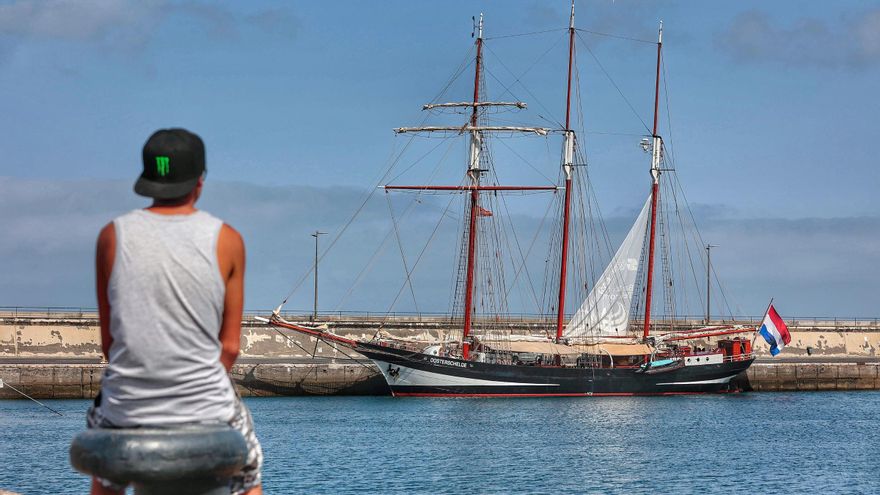
The sailing ship Oosterschelde arrives at Tenerife“the Island devastated by fire”, as the organization advertises it, the first of the 32 stops that the global conservation mission Darwin200 includes during its two-year duration. The historic ecologist ship arrived yesterday at the port of Santa Cruz to start a trip, aimed at global conservation, which will follow in the footsteps of Charles Darwin over 40,000 nautical miles.
A crew of sailors, adventurers and environmental researchers completed the first leg of the journey in twelve days. The ship covered the distance of almost 2,000 nautical miles (3,700 kilometers) between Plymouth, Great Britain, the start port of the expedition, and Tenerife.
During that time of navigation, the Island has experienced one of the worst fires forests of its history. The fire started the same day the sailing ship left Plymouth. The fire has devastated around 13,400 hectares of pine forests, laurel forests and high mountain vegetation of high environmental value. That is why the journey now acquires even greater importance if possible from his perspective of defense of environmentalism. More taking into account its impact, the Corona Forestal Natural Park – the largest protected natural space in Canary Islands– and the National Park of Teide.
The ‘Darwin Leaders’
The Darwin200 initiative involves bringing small groups of Darwin Leaders, selected from around the world for their outstanding achievements in conservation, to each port of the voyage. In total, 200 young people –hence its name– will participate in these activities for two years. Each group of chosen ones will work in the assigned port for a week. There they will carry out an intense conservation leadership program. The sailboat will be your home, while you are at the assigned destination. They will use this historic vessel as their laboratory and classroom, just as Charles Darwin did on his voyage.
Each Darwin Leader will work alongside local conservation experts to study an animal or plant species, assess its status and how it has changed over the last two centuries. In addition, he will learn about conservation initiatives underway for its protection and develop his own ideas on how best to conserve his chosen species or ecosystem in the future. Each leader will make a short film, photo essay, and research report of him available to the general public. Five Darwin Leaders from Greece, Switzerland, Australia, Germany and the Netherlands will join the sailboat in Tenerife, to participate in this intense training.
Rolf Schreuder, Darwin200 Science Coordinator, reflects: “We have had to adapt to the new situation. The project in the Teide National Park cannot be carried out and it saddens us. Instead, we will focus our attention on Tenerife’s laurel forests, a unique ecosystem, also under pressure from human activities. On the other hand, we will focus our endemic bird project on the pine forest mass, which has not suffered the action of the fire.
Stewart McPherson, director of Darwin200, points out that “our thoughts are with all those affected by the forest fires in Tenerife. Now more than ever, the island’s wildlife and ecosystems need to be protected.” He concludes: “Tenerife is both a geological masterpiece and an ecological treasure.”
The director of the Telesforo Bravo-Juan Coello Foundation, the main collaborator of the project on the Island, affirms that “I look forward to receiving such an important project that follows in the footsteps of Charles Darwin. It is a very difficult time for Tenerife’s wildlife, but I believe it is essential to get international attention in our efforts to protect it, as well as in the problems created in the Canaries due to mass tourism.” Today, at 11:00 a.m., a reception and opening event for the project is scheduled at the Museum of Nature and Archeology (MUNA).















